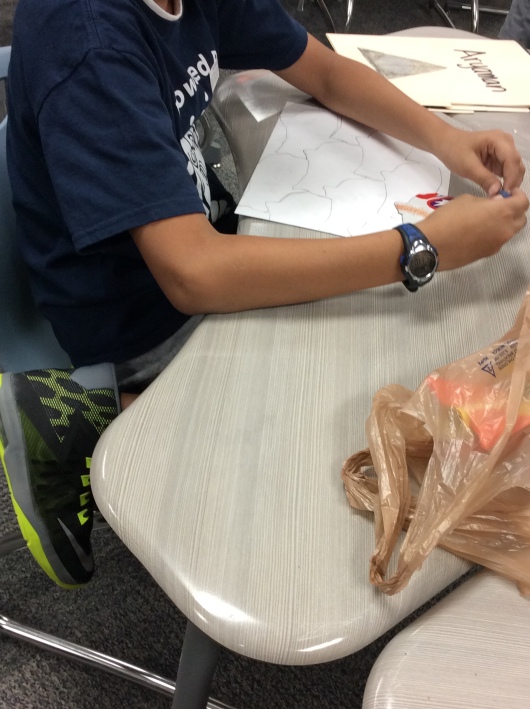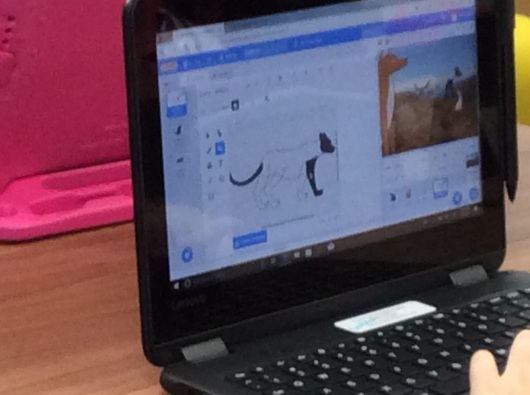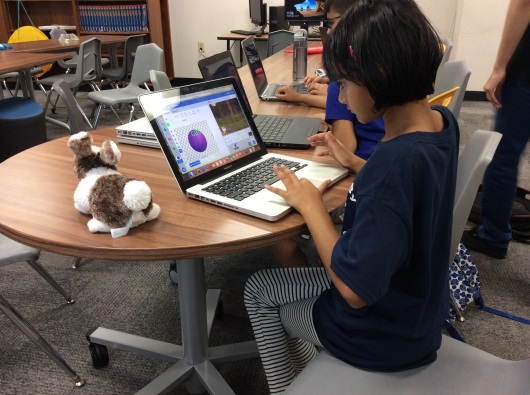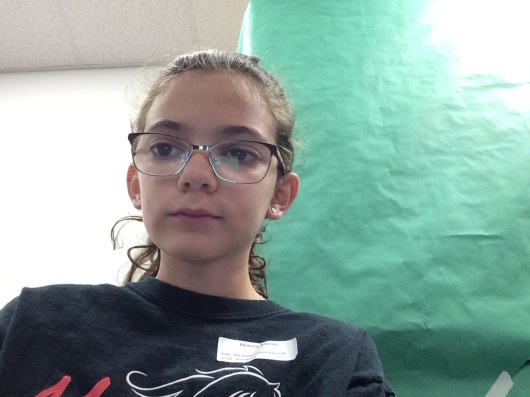JEA/NSPA Orlando
Friday –
Session 1: Using Snapchat in your Newsroom
– started following to see what news organizations are doing on snapchat
– find an expert
– take a picture or video. Adding text
– “final five” – last 5 minutes of each class to promote what’s going on the website. Final 5 videos in newsroom
– incredibly easy – you can write and draw on images. Type or doodle
– Now This News account – good one to follow for headlines of the day. It’s all graphically oriented
– make it fun and use cross promotion of other social media accounts
– #protips
- Tell stories. Reach your audience in a relevant way. Have a beginning, middle and end with characters and focus. Give a behind the scenes look at your staff and promote your program. Dip into your archives. Find different content your audience will not see.
When covering sporting events, give context. Give the scores. Stay until the end and give a final score – always! Your story has to end.
Have an introduction.
- Create a geofilter. Make one for your school. Snapchat.com/geofilters
Easy to create but hard to get approved
Must be original
No logos or trademarks
No photos or hashtags
- Create good content
Tell a story
Make each snap count
90 seconds or less
Don’t follow people back
Avoid mixing horizontal and vertical snaps
Don’t assume audience knows what you are talking about
Cover the entire game
Finish a story before starting the next
Don’t just talk about that school
Be creative
- Follow and study
- Nowthisnews
- Newyorkermag
- Thenytimes
- Shonduras
- Fallontonight
- Whitneyupdate
- Thelittlehawk
- Archive and track
Download every snap story as its done. Do they as a staff
Helps transition to the next person in charge and to critique your work
Create a google spreadsheet
- Have some fun
Ex: ugly selfie contest for teachers
Presentation link: http://goo.gl/TXCM6r
Session 2: Covering the Controversy
Michele Dunaway
Teaches at Freedom of the Press School. No principal prior review
Be a chess master. Don’t think about your next move. Think 30-40 steps ahead and think about what can happen. Thinking through impact yourself is not censorship. It’s good journalism
Go to Editors Emergency Kit on SPLC website
There are two sides minimum to every story; often there are 5, 6, 7 or more sides to a story
Freedom of the press is not a freedom to push your agenda
Hold a meeting at the start to discuss all the steps ahead. It takes a team
Do not assign new staffers to cover controversy at all or without significant help
Get the facts; ignore the rumors
Use Pew Research Center to get information
Defend the First Amendment through example
Have people sign their quotes/notes at the end of the interview
Show you are a journalist – always have your press pass
Be willing to say no. Think things through – what is the impact?
Session 3: 50 Ways To Tell a Story
List posted at http://www.yearbookbesties.com
– what is the story? A story is not a topic
– must have candid photos to tell a story
– incorporate student voices
– what questions do your readers need answered?
– not all items and news needs a lengthy amount of coverage
– fact boxes and lists. Ex: 9 things you didn’t know about
– make your lists not look like lists
– fact vs. fiction boxes
– statistics. Go to a large enough sample of statistics. Can’t get a candid photo? Make your type standout
– by the numbers. Package with numbers and stats
– poll. Make it an infographic
– great stories come from great conversations. Don’t interview; have a conversation
– biographies/profiles and autobiographies
– poor quotes come from reporters not engaging in conversations
– transcripts of a conversation. Have them talk with each other about what they know and are passionate about. Let the experts (“stars of your story”) tell the story
– roundtable conversations
– Q&A. Treat the type differently – no need to actually include the Q and A
– talk to people about their stuff
– behind the …. Ex: why did each player choose their numbers?
– Breakdown ex: field hockey equipment or show me the money. Ex: how much does a musician spent on equipment and instruments?
– best compliment: huh, I didn’t know that
– charts
– ask the experts. Find the experts at your school to tell stories. They are the ones you want to talk to
– list ex: hipster survival guide. Use humor
– Do’s and Don’ts. According to experts, not the newspaper staff members
– don’t practice butt journalism – sitting on your butt in that newspaper room. Go talk to the experts and tell stories
– Recipes. Doesn’t have to be just food. Can be recipes for success in various areas
– how to’s. Doesn’t have to be text based
– advice ex: how to get through production week of the school play. Make sure to include student voice
– step by step ex: whip/nae nae
– glossary – define words not everybody knows the definition of. Slang or lingo
– stories happen everyday. Be thinking technologically
– calendars – always include quotes and have photos. Paragraph form alone is too boring
– minute by minute ex: minute by minute coverage of a big game or event
– timelines. Sidebar of a feature story
– schedule ex: homecoming week
– checklist ex: quotes about preparing for a trip to convention
– quotes
– comparisons / scales. Quotes about the first day of school
– ratings ex: favorite cold weather drinks. It’s not about you – don’t rank based on your newspaper staff. Talk to your school
– compare and contrast ex: student addicted to technology vs. student whose parents do not allow them to be on social media
– pros and cons ex: comparing classes
– he said/she said . It’s about getting different perspectives
– who knows best?
– utilize it social media
– tactical tweets. Pay attention to hashtags
– cover hangouts in your town
– graphs. Make sure to use storytelling quotes in your infographic. Make sure to include date when data was collected.
– regular graphs are boring. Use colors and creative fonts in infographics
– if can’t get candid photos (ex: sleeping info graphic), use creative visual designs
– maps ex: different group hangout spots in your school building
– matching ex: matching the facial hair of male teachers with that correct name
– photo diaries ex: grab from photos on students phones. What makes them happy?
– stem completion – finish this though. Works well with people who don’t give great quotes
– word association
– quiz ex: bathroom options based on school location
– this or that. Flow charts
– mod mania ex: breaking down all the items and things in a specific classroom
Saturday
Session 1: How to be Awesome 3.0
Jonathan Rogers and Matthew Schott
@jon_rogers
@matthew_schott
– students amaze me. Let students take control of your newsroom. Until students make it their own, you are never going to be a great newspaper
– create hashtags and posters to inspire
– if adviser is up front leading the start of class, that’s a problem. Editors need to lead the class. The best publications have editors who take control
– if you want people to care about your newspaper, it has to be the editors – not adviser – telling staffers to quit doing homework and college applications in class. That shows that staff member doesn’t care.
– require everyone to tell an ad. 20% of what they sell goes to what they want – bean bag chairs, Keurig, lens, lights, etc.
– be different. Take different approaches to stories, how you sell ads, reward systems, you don’t have to be traditional. Think differently.
– “we’ve always done it that way” is poison
– push readability and make it easy to access and read
– convention is the time to think of ways to do things differently
– is your newspaper really geared towards teenagers? That’s your No. 1 question, not awards
– students know what their friends are doing and where they are going. What your adviser thinks is a good story might not be a good story to teenagers. Take control and reach your readers.
– push your boundaries and go where the story takes you. Be flexible and don’t force it to be what you started with
– be excited about your stories – always have 2 shorter ones and 1 bigger one in the works
– design: treat your page as you treat a story. Draft it. It needs to tell a story and do it differently. Have you talked to the writer of the story? Can’t just be making things look pretty. Make design a process . You won’t get it right the first time.
-“done” is the enemy of good journalism. You are never done; you’re just published.
– emotion and dominant image. Make sure personality comes through. Makes photos big
– make “friends” with people you cover. Establish those relationships. The more you create good relationships, the better to do your job
– find the right way to tell a story. I.E. 50 ways to tell a story. Post this list in your newsroom. Be different and don’t settle for 300 words, 2-3 sources, two line caption, etc.
– digital design, too. Have clicks on your content. SNO web design?
– embed pull quotes, videos, polls
– it’s cool to have a good homepage; more important to have your individual posts because that’s where people go through social media. Most people don’t go to your homepage 1st or at all
– need 5 hyperlinks at least in each post
– JEA Flipboard Magazine. Submit stories to hsjournalism@flipboard.com. See great online stories. NSPA stories currently listed
– Bring it all together. Get all your elements into one space
– Behance portfolio. A designer must. Behance is also a great place to find great deigns
– social media: most high school publications are lousy at it. Best at social media – ESPN Mike and Mike
– share, shares, share. Have to add Snapchat. Each story should get shared multiple times for staff and each members personal account. People trust your individual account as it has a face to it.
– put your feed on Apple News
– be proud of your work. People want to see it.
– more people are on Facebook than other platforms – don’t give up on it. Analytics prove this. The money is one Facebook as well (moms, dads, other adults)
– connect the digital world to print. Aurasma is a great connection, as well as QR codes. Let readers of your print products hear people sing and the stories that need sound to be complete. Video elements provide a “wow” effect. Use Aurasma and get more and more students (the right people) to download the app
– social media responsibility and branding: learn how to use it as people are watching you (such as college admissions offices)
– newspapers can use cutting edge technology; it doesn’t have to be an old product
– use social media and evaluate yourself
– use tweetdeck and hoot suite to create lists
– be sure to use Snapchat. Make it interactive. Tell stories – beginning, middle, end. Introduce yourself
– run web contests
– if you don’t have really good photos and quotes, you cannot have an awesome publication
– set up photoshoots
– with photos, you have to have photographers that are everywhere. You can’t just sit in that newsroom and take pictures. Practice what you do – take videos and photos. Invest in your equipment
– localize. Schools write about that same stuff – but each is localizing it. Don’t summarize – go ask people at your school. Tell a story your can tell, not that local daily newspaper
– be the authority of what happens at Coppell High School. Don’t ever get beat on CHS stories by local media. Will drive adviser nuts.
– use your phones – phone tripods, phone mics, buy accessories. No shaky videos with poor audio
– create a podcasting studio. It’s underdone in high school journalism . Have news and sports shows
– create student blogs with a focus. Movies, video games, food, health issues, punk music. Let their personalities come out. Great thing when students keep blogging after they graduate. Make it a catch name
Session 2: Deadlines Decoded
Michael Giusti, Loyola New Orleans
@Mdgiusti
Why do people miss deadline?
– lazy? Aren’t paid? (Paid college newsrooms have same problem), don’t care?
Nope – missed deadlines because system is broken
– key is not money or course credit; its management
– like puppies. Love them and train them
– make a mess; can’t yell at them. Short attention span. You didn’t catch them in the act
– missing a deadline is the same as a puppy accident in the corner
Steps
- Tend to motivational hygiene
- Train everybody properly
- Evaluate everyone’s needs
- Evaluate their needs
- Be predictable and consistent
- Involve them in the process
- Set a good example, but be reasonable
It’s not about working harder; its about working smarter.
No yelling – that doesn’t motivate
Motivational hygiene – things that help you do your job.
– equipment, policies, bad habits, newsroom environment, poisonous people, outside distractions
Training – focus on the training
– understand and define every step of the process, give tools to do it right, explicit and clear story assignments and deadlines, include TIME and DATE it is due. If you just say Wednesday, you get it late Wednesday night. Don’t delegate – do it as a leader
This is where most people go wrong and lose their staff
Follow through
– make sure you enforce your deadlines. The second they miss their deadline, you CALL (not text) the writer. If they don’t pick up? No VM but call back in 5 minutes. You caught them in the act of missing their deadlines. Make them cringe at missing a deadline. This is most important. Call them!
Focus on needs – why are people working for you? You need to understand this as a leader
– understand their need: need class credit, want to be a journalist, praise, social outlet, experience, etc. don’t assume you know this needs – ask them.
Understand expectations
– show the doing the things for you help them meet their goals. Connect the dots for them. Show them doing this now will lead them to what they want in the future.
Goals
– involve staff in the goal setting process. Unless they understand why something is important, they won’t give you buy in
– make sure your goals are SMART-C: specific, measurable, achievable, relevant, time sensitive and challenging
Putting it all together
– make sure to call. Don’t ask why they missed deadline. To be frank, you don’t care and you don’t want lies and excuses.
– point out you didn’t get that story and get an ETA
– this should not be the first time you have checked in with staffer. Make sure you have called or texted as the deadline is approaching
– don’t ask “how is that story coming along?” Ask specific questions they have to answer. Communicate and assist along the way
– you must call!
For this to work
– be consistent, won’t work the first week, make it hurt to miss a deadline,
– don’t send group emails complaining about deadlines. Don’t lump in those who did meet deadline. Everything needs to be one on one. Don’t aid and comfort those who missed deadlines by grouping with other offenders
– don’t just enforce the “real” deadlines
Your goal
– reserve praise she they actually hit their deadline and always notice when they don’t hit deadline. Be consistent
– make deadline meaningful. Make sure you will check and read that story right when it comes I
– make sure deadline attainable. Make sure it is useful to you so you can do your job and give feedback. Make sure it lets other staff members (page designers) time to do their job.
– give time to work with your staffer
Golden Rule of Management
– scold in private; praise in public
– all that matters is how your staffers want to be treated but don’t lower your standards
Critique
– be honest. Only praise what deserves to be praised.
– give them the level of critique they can handle (based on experience)
– avoid judgmental words. Give real reasons to change
– say “we” and not “you”
– couch your criticism with “I think…”
Leading by example
– your staff will only work as hard as you work
– if you slip up, everyone will notice
– stick with it
But wait?
– document your communication and if they can’t meet deadlines, you let them. System is 80 percent and people are 20 percent. If you do all of your system 80 percent consistently and correctly, it’s on them to do their 20 percent
Enforcing deadlines with friends? Use the system the same way
Lying staff members? Don’t put them position where they can lie. Ask specific questions and make sure they give specific answers.
Always have a backup plan. Don’t give them leverage to think you must have the story regardless of when they turn it in.






















 By: Helena, Middle school East
By: Helena, Middle school East Helena, Austin Elementary
Helena, Austin Elementary By Alexa, Coppell Middle School West
By Alexa, Coppell Middle School West